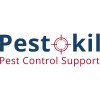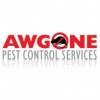
Pestokil are a privately owned and managed pest control company, covering the South East London, Kent, Surrey and Essex regions. We are proud of the reputation we have gained over many years, built on our passion for what we do, our knowledge and professionalism and our ability to quickly and efficiently eradicate pest problems. Our mission is simply to remove the worry and stress associated with pest problems to enable our customers to get on with their everyday lives.
Services
Ants
Report
There are a number of different species of ant that can cause problems in the UK; the most common are the black ant and the garden ant, but it is not unheard of for people to report flying ant or tropical pharaoh ant infestations.
If ants do make it into your home or workplace, they will be looking for and attracted to foodstuffs (including any pet food), particularly those that are sweet and sticky.
Initially, you can try to get rid of ants in your home yourself, using one of a number of widely available DIY solutions, including powders and bait stations.
If ants do make it into your home or workplace, they will be looking for and attracted to foodstuffs (including any pet food), particularly those that are sweet and sticky.
Initially, you can try to get rid of ants in your home yourself, using one of a number of widely available DIY solutions, including powders and bait stations.
Silverfish
Report
A lesser-known pest, the silverfish, also known as 'fish moths' are not directly harmful to humans, but they can cause significant damage to property, which means they can be a big problem, and, like any pest, in large volumes they represent a hygiene risk.
As their name suggests, they are silvery in their appearance, and move in a fish-like manner.
Their main food sources are mould, foodstuff and non-food sources of sugar, such as wallpaper glue and wallpaper, photographs, clothes, books, dry wall insulation, and loft insulation, amongst other things.
As their name suggests, they are silvery in their appearance, and move in a fish-like manner.
Their main food sources are mould, foodstuff and non-food sources of sugar, such as wallpaper glue and wallpaper, photographs, clothes, books, dry wall insulation, and loft insulation, amongst other things.
Spiders
Report
Spiders and spider infestations are most commonly seen in autumn and winter, when they are large and fully grown, and will begin to enter properties to find warmth and build nests.
If you see a lot of spiders and/or webs in your home, then it is quite possible that there is a nest somewhere, most likely in your loft or wall space.
Spiders in the UK generally pose no threat to humans or property, despite their messy webs, meaning that they are not typically considered a pest, and so should really be left alone; however, millions of people have a real fear of them, and find it difficult to have them in their home or workplace.
If you see a lot of spiders and/or webs in your home, then it is quite possible that there is a nest somewhere, most likely in your loft or wall space.
Spiders in the UK generally pose no threat to humans or property, despite their messy webs, meaning that they are not typically considered a pest, and so should really be left alone; however, millions of people have a real fear of them, and find it difficult to have them in their home or workplace.
Book Lice
Report
Booklice are attracted to damp and mould; in the natural environment they are usually found in animal nests, tree trunks, under bark and on leaves, but as they are attracted to plant and animal materials they also frequently make their way into food manufacturing sites, warehouses, residencies and business premises, where they will infest food, leather, woodwork, paper, plaster and other materials.
There are many species of booklice, found all over the world, and the different species have different temperature preferences - some thrive in cool environments, whereas others are attracted to heated environments.
There are many species of booklice, found all over the world, and the different species have different temperature preferences - some thrive in cool environments, whereas others are attracted to heated environments.
Bed Bugs
Report
Bedbugs (Cimex lectularius) are small blood-sucking insects that can live in cracks and crevices in and around your bed.
These appear around 20 to 30 minutes after being bitten and can last for several days Bed bugs need to feed on the blood of a human host.
However in some cases they can survive up to a 6 to 8 months without feeding.
Although bedbugs can be upsetting and stressful to find, they aren't dangerous and don't transmit any human diseases.
Most people don't develop any serious skin reaction.
These appear around 20 to 30 minutes after being bitten and can last for several days Bed bugs need to feed on the blood of a human host.
However in some cases they can survive up to a 6 to 8 months without feeding.
Although bedbugs can be upsetting and stressful to find, they aren't dangerous and don't transmit any human diseases.
Most people don't develop any serious skin reaction.
Reviews

Be the first to review Pestokil.
Write a Review


